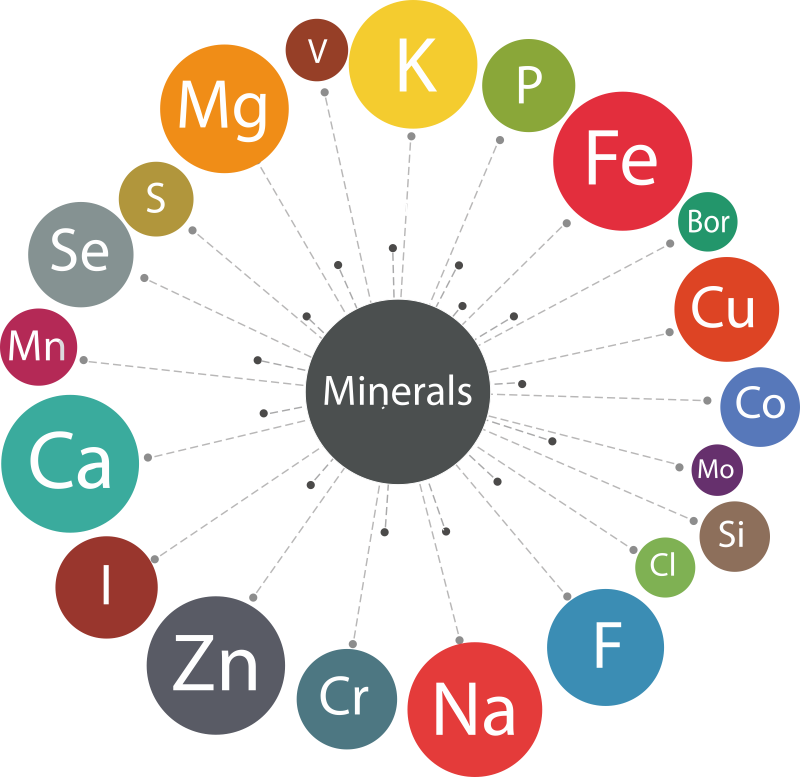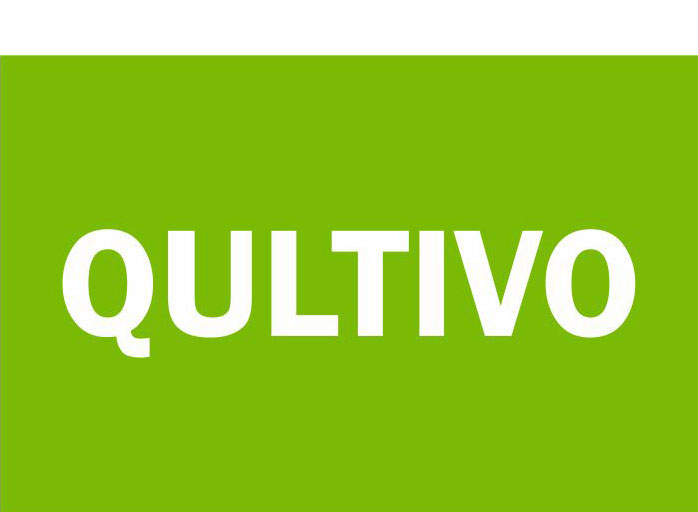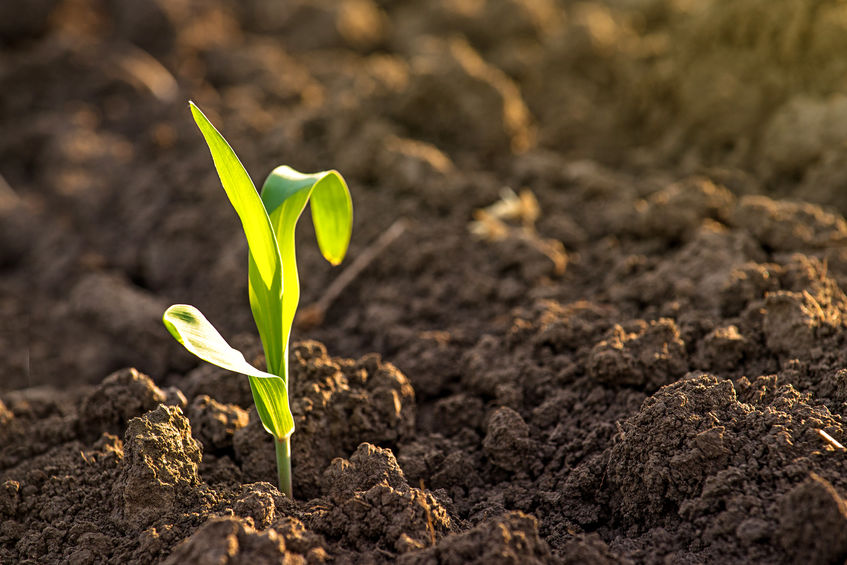Foliar application in the form of spraying
Spray 1 to 6 times depending on the phases of plant development. Spray intervals from 14 days to 20 days, in spring, summer and autumn. In winter, spray once a month. The leaves after spraying should be completely moist. Dilute concentrate in an amount of 0.25 liters in 200 liters of water – the amounts depend on the species of plants and crops.

QULTIVO + MINERAL FERTILIZERS
Intensive agricultural systems require the introduction of large amounts of mineral fertilizers into the soil to ensure plant nutrition with the help of basic macroelements – nitrogen, phosphorus and potassium. However, the higher the rate of mineral fertilizer application, the more intense soil erosion, depletion of humus, and environmental pollution.
The problem of effective assimilation of mineral fertilizers is crucial for plant production. The complexity of its solution lies in the fact that potassium and nitrogen fertilizers easily soluble in water are easily washed away from the soil, while phosphatic fertilizers, on the contrary, are bound by Ca, Mg, Al and Fe ions present in the soil to a neutral form inaccessible to plants. And only in the presence of humic substances does the plant rapidly absorb all the elements of mineral nutrition!
Thus, using barley as an example, it has been shown that the introduction of QULTIVO against NPK improved its growth, development and yield while reducing the use of mineral fertilizers. On the example of wheat, it was found that “unilateral application of nitrogen fertilizers on winter wheat has little effect on yields and only their use with QULTIVO and superphosphate gave the expected effect”. It is worth noting that the mechanism of interaction of QULTIVO and macronutrients of mineral nutrition is specific for each of them.
Nitrogen assimilation takes the path of intensifying metabolic processes (when using QULTIVO, the need for nitrogen administration is reduced by up to 50%), while negative nitrate formation slows down. Potassium absorption is accelerated by selectively increasing the permeability of the cell membrane. As for phosphorus, QULTIVO, by binding mainly to Ca, Mg and Al ions, prevents the formation of insoluble phosphates. Therefore, as the humus content increases, the plant’s phosphorus removal increases.
Combination of QULTIVO with mineral fertilizers:
- contributes to the accumulation of mineral nutrients in the soil and ensures a lack of humus balance;
- improves soil structure and regeneration;
- normalizes the reaction of the soil solution;
- increases plant resistance to temperature fluctuations;
- reduces incidence;
- improves the ecological situation;
- activates soil microflora activity;
- has a pronounced prolonged effect



QULTIVO + MICROelements
One of the most important components of plant nutrition are trace elements: copper, zinc, boron, manganese, molybdenum, cobalt. In addition to the fact that QULTIVO contains many valuable trace elements, the humic substances of QULTIVO most effectively transport trace elements to plants, forming complexes with trace elements that are easily and well absorbed by plants. The presence of humic complexes determines the mobility of almost all trace elements, their intake and movement through plant organs. The main trace elements are consumed by plants in very small amounts, measured in thousandths or even hundredths of a percent, but they are necessary for their development.

Each of these trace elements plays a role, but in some cases they can substitute.
Boron (B) treats some diseases, increases the number of ovaries, preventing them from falling out, improves the development of reproductive organs, increases the amount of vitamins in fruits, promotes better development of conductive vessels, affects the activity of a number of enzymes. Boron increases sugar beet yields, sugar content in roots, harvests of peas, fodder beans; flax fiber collection, linseed, fiber quality.
Manganese (Mn) is essential in photosynthesis and ascorbic acid formation; is part of many enzymes, increases sugar beet yield and sugar content.
Copper (Cu) activates protein synthesis, provides plants with drought resistance and frost resistance to fungal and viral diseases, is part of many enzymes. In general, it positively affects the metabolism of proteins and carbohydrates in plants.
Zinc (Zn) is part of many enzymes involved in fertilization, respiration, protein and carbohydrate synthesis.
Molybdenum (Mo) is important in the processes of nitrogen assimilation from the air, is part of the enzyme involved in restoring nitrate nitrogen to ammonia, stimulates the work of nitrogen-binding bacteria, both nodal and slow-living. Increases the yield of peas and beans, vetch, feed lupine, clover and meadow hay, has a positive effect on cauliflower cultivation.
Cobalt (Co) is necessary for the functioning of nodular bacteria. It is required for legumes that need cobalt in the process of nitrogen fixation.
The use of QULTIVO is very important in soils with low trace element content. These are peat, soda-podzolic soils, light soils and low humus soil. In such fields, it is recommended to use QULTIVO, it is recommended to combine it with application to the soil and carry out treatments on the leaves (except for root dressing throughout the entire vegetative growth of plants). Mobility of trace elements depends on humus content and soil pH, and boron and copper content also depend on soil moisture.
Humic substances in QULTIVO play an important role in the transport of trace elements – therefore treatment of vegetative plants with medicine ensures their constant nutrition with the help of macro- and microelements necessary for vital functions.
The effect obtained when using QULTIVO in two ways – compared to previous crops before use QULTIVO:
- soil treatment (destruction of crop residues),
- seeds – absorption of nutrients
Leaf + 55 to 58%
Root + 20 to 30%

The effect obtained using QULTIVO in three ways – compared to previous crops before use QULTIVO:
- soil treatment (destruction of crop residues),
- seeds – absorption of nutrients
- foliar spraying during the growing season – absorption of nutrients
Leaf + 95 to 98%
Root + 30 to 40%
APPLICATION TABLE QULTIVO
The amount of QULTIVO concentrate and the amount of water needed to prepare the solution and the number of treatments for the different crops.
Plant group or application method | Plant group or application method | Plant group or application method | Plant group or application method | Dose concentrate QULTIVO | Number of treatments | The amount of water in liters |
|---|---|---|---|---|---|---|
FOR THE SOIL IN AUTUMN | To the soil | After the harvest, in order to properly distribute the plant residues remaining in the field | Depending on the remaining biomass in the field, e.g .: | • 1 liter of fertilizer per 200 liters of water for 1 ton of residue; • 2 liters of fertilizer, 200 liters of water for 2 tons of residue; • 5 liters for 200 liters of water for 5 tonnes of residue. | 1 | 200 |
FOR THE SOIL IN SPRING | To the soil | Depending on the quality of the soil | about 2 liters per 1 ha | 1 | 250 | |
PLANTS AGRICULTURAL, CEREALS | FOLIAR SPRAYING | 1 liter per 1 ha | 1 - 3 | 200 - 250 | ||
SEEDS | Soaking | 1 liter / 1 tone | 1 | 10 | ||
PLANTS | Soaking | 0,25 liter | 1 | 15 | ||
ORCHARD PLANTS | To the soil | 3-4 weeks before planting plants | • 2 liters per 1 ha or • 20 ml per 100 m2 | 1 | • 400 or • 4 | |
To the soil | In orchards and plantations in early spring | • 2 liters per 1 ha • 20 ml per 100 m2 | 1 | • 400 • 4 | ||
FOLIAR SPRAYING |
| • 1 liter per 1 ha • 10 ml per 100 m2 | 3 - 4 | • 400 • 4 | ||
PLANTS DECORATIVE | To the soil | 3 - 5 days before planting in the ground | • 2 liters per 1 ha • 20 ml per 100 m2 | 1 | • 400 • 4 | |
Fertilization | Plants grown in the ground | Young or weak growing plants | • 1 liter per 1 ha • 10 ml per 100 m2 | 1 - 3 | • 400 • 4 | |
Fertilization | Plants grown in the ground | Older or vigorously growing plants | • 2 liters per 1 ha • 20 ml per 100 m2 | 1 - 3 | • 400 • 4 | |
Fertilization | Plants potted and balcony | April to October | 2 - 3 ml | every 14 to 21 days | 1 | |
Fertilization | Plants potted and balcony | In winter | 2,5 ml | once a month | 1 | |
FOLIAR SPRAYING | 2,5 ml | 3 - 4 | 1 | |||
LAWNS | To the soil | Early spring or fall | 3 - 5 days before setting up the lawn | • 2 liters per 1 ha • 20 ml per 100 m2 | 1 | • 400 • 4 |
Fertilization | • 2 liters per 1 ha • 20 ml per 100 m2 | once a month | • 400 • 4 | |||
FOLIAR SPRAYING | • 0,5 liter per 1 ha • 5 ml per 100 m2 | 3 - 4 | • 200 • 2 | |||
PLANTS VEGETABLE | To the soil | before cultivation in the ground | 5 - 10 days before sowing seeds or planting seedlings | • 2 liters per 1 ha • 10 ml per 100 m2 | 1 | • 400 • 2 |
Fertilization | vegetables grown in the ground | after emergence, after the first proper leaves have formed and the seedlings have taken root | • 0,5 liter per 1 ha • 5 ml per 100 m2 | 1 | • 200 • 2 | |
Fertilization | vegetables grown in the ground | older and stronger plants | • 1 liter per 1 ha • 10 ml per 100 m2 | every 14 to 21 days | • 200 • 2 | |
Fertilization | vegetables grown under covers | during the growing and fruiting season | • 0,5 liter per 1 ha • 5 ml per 100 m2 | every 7 to 14 days | • 200 • 2 | |
Fertilization | vegetables grown under covers | species with strong growth (tomato, cucumber, pepper) | • 1 liter per 1 ha • 10 ml per 100 m2 | every 7 to 14 days | • 200 • 2 | |
FOLIAR SPRAYING | • 0,5 liter per 1 ha • 5 ml per 100 m2 | 2 - 4 | • 200 • 2 |
Use of concentrate QULTIVO:
Recommendations:
- It is recommended to apply to all types of soil, especially poor, loamy, saline and sandy soils!
- Perform spraying when the air temperature is between +5 and + 25 ° С
- Use the finished product at dawn or after sunset - in the morning or in the evening, when the wind is low.
- Do not use on frozen, flooded, water-saturated, snow-covered soils and during rainfall. Frozen soils shall not be considered to be those which thaw at least the surface during the day.
- Apply to the soil simultaneously with watering many times throughout the growing season, at least two weeks apart (at least 14 days). The last spraying should be done no later than 2-3 weeks before harvesting!
- Apply both alone and in combination with mineral fertilizers or against their background (with such a combination, the efficiency factor in the form of obtaining an increase in yield increases significantly).
- Do not exceed the recommended doses.
Preparation of the working liquid:
- Shake the container well before opening and measure the required amount of fertilizer.
- Partially fill the sprayer tank with water (if possible, use warm water at a temperature of +20 to + 25 ° С) and pour the measured amount of fertilizer with the agitator turned on.
- Fill the water tank with water while stirring.
- Use the prepared working fluid immediately after its preparation.
- The fertilizer can be used together with plant protection products, after prior testing of their miscibility, as a result of which no sediment or other insoluble element is formed.
Storage conditions:
- Store in a cool and dark place, in original packaging, at a temperature of + 5 ° С to + 30 ° С
- Dispose of unused fertilizer packaging after the expiry date.
- Shelf life of 2 years.
Precautions:
- When working with fertilizer, observe the generally applicable hygiene and safety rules.
- Use protective gloves.
- In the event of eye contamination, rinse thoroughly with water and, if necessary, consult a doctor.
- The product is not suitable for consumption, keep away from children.






